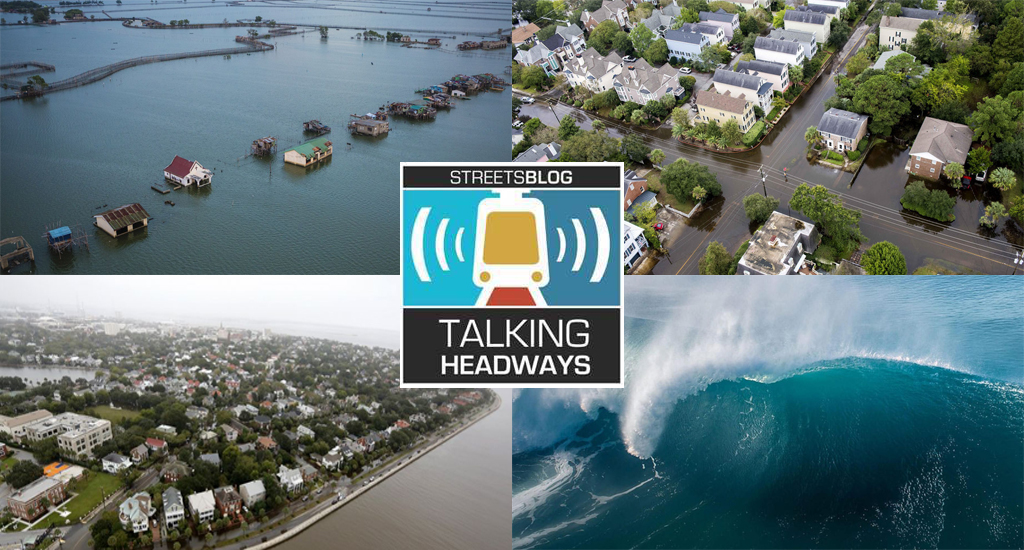This week we’re joined once more by Susan Crawford, author and Harvard Law Professor to talk about her new book, Charleston: Race, Water, and the Coming Storm. Susan chats with us about sea level rise, city solutions, and opportunities to rethink our responses.
Listen below. A full, unedited transcript can be found here. An edited partial excerpt of our conversation is below the audio player.
Jeff Wood: You know, this is usually an urban planning transportation podcast. And we are talking about urban planning, obviously. But there is a transportation connection to this too. And I noticed this a lot in the book — if you have all these days where, basically, the streets are created so that they can take water away from houses, the streets are flooded and you can’t go anywhere, you can’t get to the hospital, you can’t get to your church, right? You can’t get to the places where you wanna go. And so this has a very important connection to transportation that I think that people might miss as well.
Susan Crawford: Yeah, I think people may not know that often streets are used as storage repositories for water — that houses are built up on fill and then the street being lower takes all the water. Well, what if you need to evacuate during a storm? If you’re using an electric car, you’ll roll up the windows and then never be able to roll them down again and the car stalls and you’re stuck forever. Then what happens? And we are so reliant on individual cars all over America, also, having no transit in the Charleston area seemed like a good reason to write about Charleston. It’s sort of emblematic of our failure to plan adequately for public transit. Like you, I’m a big fan of public transit and it was striking to me how difficult it was to move around the Charleston area.
But, yeah, you’re absolutely right. All of these issues, housing, transit, public health, economic growth, everything is tied to sea level rise.
Jeff Wood: The housing issue is a traffic issue is something that came up too, where folks are talking about, well, if we do move people or we have to push people to move to the outskirts of the city and they still need to commute back in to work at the restaurants or work anywhere else, you know, there’s gonna be a traffic issue because you’re creating more trips, you’re creating more need for people to go from one place to the other rather than living next to where they’re working and maybe walking or biking or or taking a bus if it does exist. And so that’s another thing that comes up is if you’re thinking about public housing, if you’re thinking about relocation of folks, even managed retreat, you have to think about the transportation related to that because it will be important in the future.
Susan Crawford: Absolutely. And Charleston, like Santa Monica and lots of other places, had a trolley system that was terrific. They took it out and so now it’s all private cars. It’s just starting with some bus rapid transit and I wish them well with that. But you’re absolutely right. This transit issue is at the heart of what’s gonna happen with strategic relocation.
But let’s be optimistic, this is an opportunity to plan in a much better way for the future of cities and to perhaps look at places like Buffalo and Minneapolis, places that may be climate havens and help them build up their Transit system so they can serve even more people. I’ve gotten really curious about Bangladesh, which is facing these issues in advance of us.
They’re already getting a lot of sea level rise and flooding millions of people, and they are apparently planning with 20 of their, not hugest cities, but larger cities in the upland area to be receivers of refugees. And I’m gonna find out whether they’re also planning for transit. I hope they are. But that’s clearly part of the equation.






